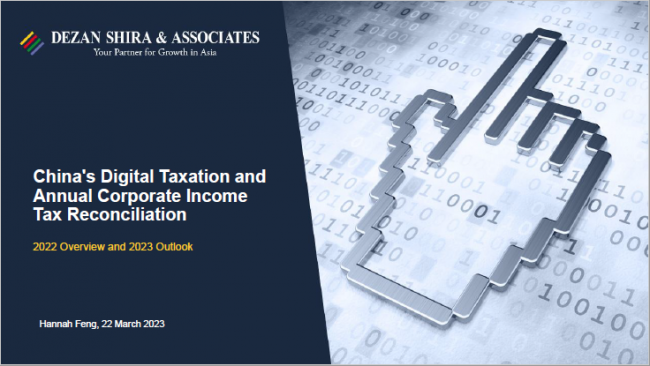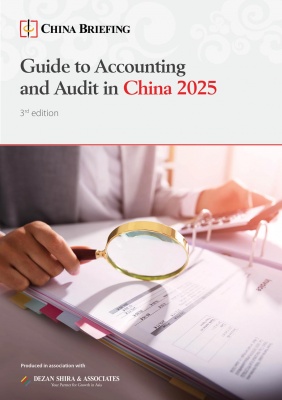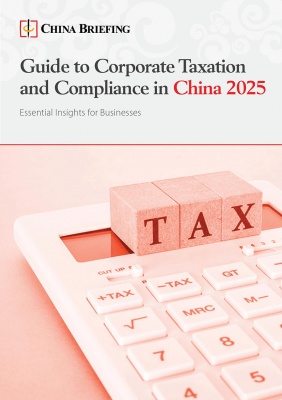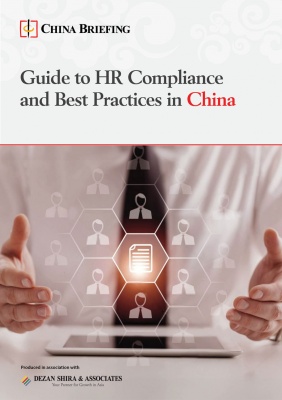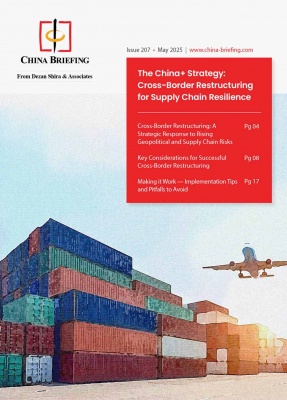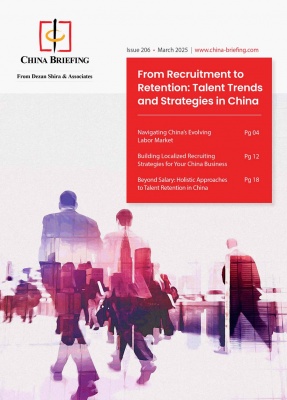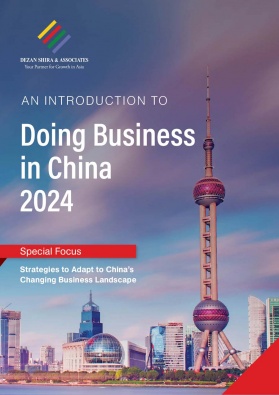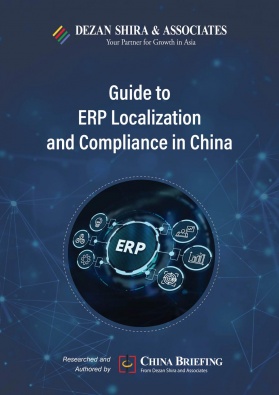Asia Transfer Pricing Brief: Q2 2024
In our Asia Transfer Pricing Brief for Q2 2024, we highlight the latest transfer pricing developments across Asian markets:
- Malaysia: Released updated guidelines for advance pricing arrangements (APA), introducing significant changes to the current APA landscape.
- Singapore: Updated transfer pricing guidelines, bringing changes to various aspects, including financing transactions, capital transactions, economic analysis, audits, surcharges, and transfer pricing documentation.
- OECD: Released updated guidance on the implementation of country-by-country reporting, clarifying the reporting of dividends.
- OECD: Issued final guidance on Pillar One Amount B on baseline distribution, aiming to simplify and streamline the application of the arm’s length principle to in-country baseline marketing and distribution activities.
Malaysia introduced updated advance pricing arrangement guidelines
The Inland Revenue Board of Malaysia (IRB) introduced updated guidelines on advance pricing arrangements on April 2, 2024 (“APA Guidelines 2024”), following the introduction of the Income Tax (Advance Pricing Arrangement) Rules 2023 (“APA Rules 2023”), which were released in May 2023.
The APA Guidelines 2024 introduce significant changes to the current advance pricing arrangement (APA) landscape in Malaysia, particularly tightening the eligibility criteria for APA applications. We have summarized the key changes introduced in the updates as follows.
| Key Changes in Malaysia’s APA Landscape | |
| Aspects | Details |
| Eligibility criteria | The APA Guidelines 2024 clarify that in order to ensure efficient use of resources, an APA application will only be considered where:
|
| Operating margin test | For taxpayers whose functions, assets and risks (FAR) and business model will remain the same, the proposed benchmarking analysis covering the APA should not result in an operating margin reduction of more than 3% of the average weighted margin for five years for existing businesses or three years for new businesses.
If there is a change in FAR, an operating margin reduction of 5% or more may not be acceptable if there is no transfer of intangible property, a major shift in FAR, or a transfer of significant people functions. In such instances, justifications and supporting evidence for the change in FAR must be submitted during the APA application. |
| APA applications for cases undergoing audit/investigation/appeal | Taxpayers undergoing an audit or investigation are not allowed to apply for an APA until the audit or investigation has been settled or relevant appeals to the Special Commissioners of Income Tax or court have been decided. |
| Maximum covered period | A covered period is typically between three to five years of assessment. However, the APA Guidelines 2024 clarify that the covered period for a bilateral/multilateral APA may now be extended beyond the maximum of five years, subject to agreement between competent authorities. |
| New confirmation period | Upon a successful agreed outcome for a bilateral/multilateral APA, the taxpayer must confirm its acceptance of the outcome in writing within 30 days from the date of notification of the outcome. |
| Preliminary discussion | Under the previous APA guidelines, applicants were only highly encouraged to have a preliminary discussion with the IRB before a pre-filing meeting.
Greater weight is placed on the preliminary discussion under the APA Guidelines 2024. The preliminary discussion must now be held at least three months from the date of making the written request for a pre-filing meeting and certain documents must already be provided at the preliminary discussion stage. |
| Timing for application | Ultimately, if a taxpayer is considering an APA application, it would be prudent to factor in a minimum of 15 months for the application process given that a written request for a pre-filing meeting must be submitted at least 12 months in advance, and a preliminary discussion must be held three months earlier than the written request for a pre-filing meeting. |
| Conversion of bilateral/multilateral APAs in the event of negotiation failure | If negotiation fails to be reached in a bilateral APA, the taxpayer cannot convert the bilateral APA application into a unilateral APA application.
For a multilateral APA, if negotiations fail to be reached with any one of the competent authorities, the taxpayer may choose to continue with a bilateral APA or multilateral APA with the remaining countries. |
In light of the above significant changes to the APA landscape, enterprises are encouraged to conduct a detailed assessment of whether they would qualify for an APA before making an application. Even where a taxpayer is eligible, they should bear in mind balancing the (i) resources needed for an APA application; and (ii) transfer pricing risks surrounding the relevant intercompany transaction. Enterprises that are not qualified for APA application shall prepare robust transfer pricing documentation to mitigate related risks. Support and assistance might be sought from consulting firms/TP professionals in this regard.
Singapore updated transfer pricing guidelines
In June 2024, the Inland Revenue Authority of Singapore (“IRAS”) released the 7th edition of the Transfer Pricing Guidelines (“TPG”), which is updated from the 6th edition released in August 2021.
Certain basic guidance remains unchanged from the 6th edition of TPG:
- All taxpayers (large or small), are required to apply the arm’s length principle to ensure that the pricing of their transactions with related parties (“RP”) reflects independent pricing
- Taxpayers are to prepare and keep contemporaneous transfer pricing documentation (TPD) on meeting SG$10M revenues in a basis period, or where TPD is required to be prepared in the prior tax basis period, to evidence that RP transactions are conducted at arm’s length.
- The TPD needs to be prepared by the income tax return filing date for the tax period and retained for five years.
- While details of the TPD remain accurate and relevant (with no material changes year-on-year), taxpayers may refresh their TPD once every three years and prepare simplified TPD in between years, if conditions are met.
- The penalty for non-compliance is a fine not exceeding SG$10,000.
The new edition also provides updates and additional transfer pricing (TP) guidance in several areas, mainly including financing transactions, capital transactions, economic analysis, audits, surcharges, TPD, and other changes. We have summarized the key changes to the guidelines as follows.
Financing transactions:
- New rules regarding the exemption of TPD preparation apply to domestic RP loans, where:
- Taxpayers enter into RP loans (as defined in para 15.6) for any amount, on or after 1 January 2025, where (i) neither the lender nor borrower is in the business of lending and borrowing money, and (ii) the IRAS indicative margin is applied in accordance with the administrative practice in TPG paras 16.60 to 15.69.
- Additionally, if the taxpayers choose not to apply the IRAS indicative margin, they will apply the arm’s length methodology to determine the interest rate as in TPG para 15.19.
- Inclusion of Frequently Asked Questions (FAQ) and TPD guidance for long-term loans
- Guidance on the base reference rates:
- In sections 15.40 -15.47 of the 7th edition of the TPG, IRAS provides guidance on identifying a suitable base reference rate in the determination of a loan interest rate, based on consideration of relevant economic characteristics of the RP loan.
- The IRAS guidance for base reference rates includes:
- The replacement of interbank offered rates (“IBOR”s) as a base loan reference rate with risk-free rates (“RFR”);
- The transition from existing loan interest rates referenced to IBOR, to rates referenced to RFR at arm’s length, by applying relevant guidance from governing bodies and where appropriate, a spread adjustment to account for the economic difference between RFR and IBOR reference rates; and
- For changes beyond those attributable to the IBOR reform and relevant guidance, IRAS may consider loan refinancing.
- Required disclosure information contained in TPD prepared to support loan interest rates
Capital transactions:
- Clarifications in IRAS’s views on the transfer/sale of fixed assets between RPs, including the use of open market price for the transfers/sales.
- Documentation not mandatory (but preferred).
- The taxpayers are not required to prepare TPD for such fixed assets for Singapore tax purposes.
- As the open-market price will be used for tax purposes, TPD is preferred.
Economic analysis:
- Guidance on how working capital (“WC”) adjustments could be made (interest rates to be used, etc.).
- Guidance on strict pass-through costs.
- Treatment of government assistance for TP purposes.
Audits, surcharges, TPD, and other changes:
- Further elaboration on the TP audit process.
- Elaboration on how IRAS will disregard an actual RP transaction.
- Clarification on partial or full remission of S34E surcharges.
- Increase of thresholds and clarifications on how transaction categories should be aggregated.
- Date requirement for simplified TPD.
The updates in the new TP Guidelines reflect the trend of an easing of the compliance burden for taxpayers, where related party transactions fall below the increased thresholds for TPD preparation. However, if the enterprise has related party financing transactions, a transfer or sale of fixed assets, or has received government assistance, then the enterprise might be well impacted by the changes in the TP Guidelines. In light of these changes, the enterprises are encouraged to review their current transfer pricing position and evaluate whether further actions shall be taken from the transfer pricing perspective to navigate the current TP landscape.
OECD released updated guidance on the implementation of country-by-country reporting
The OECD has published an updated version of its Guidance on the Implementation of CbC Reporting, approved in May 2024. The latest version of the guidance, which is available in English and French, includes new guidance concerning the treatment of dividends for purposes of “profit (loss) before income tax” in Table 1, which replaces previous guidance issued in September 2018.
One of the pivotal elements in the evolution of international tax compliance is the Country by Country (CbC) reporting requirement initiated by the OECD as part of its Base Erosion and Profit Shifting (BEPS) project. Recently, there has been a crucial update in the OECD guidelines, mainly focusing on item 2.7.1, which pertains to the treatment of dividends for purposes of “profit (loss) before income tax,” “income tax accrued (current year),” and “income tax paid (on a cash basis). This change, effective for fiscal years starting on or after January 1, 2025, aims to bring greater clarity and consistency across the reporting practices of multinational enterprises (MNEs).
As Introduced under Action 13 of the BEPS Action Plan, CbC reporting requires large multinational enterprises to report annually and for each tax jurisdiction in which they do business. This provides aggregate data on the global allocation of income, profit, taxes paid, and specific indicators of the location of economic activity among the tax jurisdictions in which they operate. This initiative is designed to enhance transparency for tax administrations by providing them with the necessary information to conduct high-level transfer pricing risk assessments.
Dividends are payments made by a corporation to its shareholders from its profits. In CbC reporting, how dividends are treated can significantly affect the reported profit before taxes, influencing a constituent entity’s perceived profitability and tax liability within a multinational group. The latest guidance focuses on treating these dividends received from other constituent entities within the same group.
The 2024 update has clarified that dividends paid between constituent entities should not be included in the profit (loss) before income tax in the recipient’s jurisdiction if they are recognized as dividends in the payer’s jurisdiction. This alignment ensures that the reported profit reflects operational earnings more accurately, excluding intra-group financial transfers that do not constitute genuine economic activities.
Here’s what the updated guidance entails:
- Exclusion of dividends: The guidance explicitly states that dividend payments from other constituent entities recognized as dividends in the payer’s tax jurisdiction are excluded from profit (loss) before income tax. This is a significant shift aimed at standardizing the treatment across different jurisdictions, reducing the variability in reporting such transactions.
- Clarification of terms: How different jurisdictions interpret and implement dividend guidelines has often been ambiguous. The new guidance provides a more precise definition of such payments, aiming for uniformity in understanding and reporting.
- Implementation and compliance: Starting January 1, 2025, all MNEs are expected to comply with this new guideline. This advance notice gives companies ample time to adjust their internal reporting systems and ensures all stakeholders, including tax authorities and compliance departments, are on the same page.
The clarification and standardized treatment of dividends are likely to have several implications for MNEs:
- Reduced compliance complexity: With a clearer understanding of how to treat inter-entity dividend payments, companies can streamline their reporting processes, reducing the risk of errors and non-compliance.
- Enhanced transparency: This update will likely improve the transparency of financial reporting and tax obligations, making it easier for tax authorities to assess and address BEPS risks.
- Financial planning and operations: Understanding the tax implications and reporting requirements for dividend transactions can influence decision-making regarding capital structure and the distribution of profits within multinational groups.
The latest updates regarding the treatment of dividends demonstrate the OECD’s commitment to creating a more transparent, consistent, and fair framework for global tax reporting. As MNEs prepare to implement these changes, staying informed and proactive in adapting to new guidelines will be crucial in effectively navigating the complexities of international tax compliance.
OECD released final guidance on Pillar One Amount B on baseline distribution
In February 2024, the OECD published a report that aims to simplify and streamline the application of the arm’s length principle to in-country baseline marketing and distribution activities (the Report) (also known as Amount B under Pillar One) by establishing a fixed Return on Sales (RoS), ranging from 1.5% – 5.5% (+/- 0.5%).
Amount B is meant to apply to virtually all industries selling (tangible or digital) goods in a wholesale context, and does not foresee any revenue thresholds for its application.
Implementation of Amount B
The Report indicates that the OECD will publish a list of the jurisdictions that choose to apply Amount B.
Amount B will be treated as providing an arm’s length outcome only in jurisdictions that choose to apply the approach. In jurisdictions that do not choose to apply it, Amount B will not be treated as providing an arm’s length outcome, including for the purposes of Article 9 of the OECD MTC and by extension Article 25. The outcome determined under the Amount B approach by jurisdiction is not binding on the counter-party jurisdiction.
Jurisdictions that choose to apply Amount B may choose to apply it by either (1) permitting tested parties resident within their jurisdiction to elect to apply the Amount B approach; or (2) by requiring the use of the Amount B approach in a prescriptive manner by their tax administration and tested parties resident in the jurisdiction.
Regardless of the manner of application, the Report states that the arm’s length outcome for out-of-scope transactions should be evaluated under the guidance included in the other sections of the OECD TP Guidelines. Moreover, the guidance should not be interpreted as providing a “floor” or a “ceiling” for returns to distribution activities in general.
The OECD notes that because Amount B is incorporated in the OECD TP Guidelines, it is possible that some jurisdictions not participating in the Inclusive Framework will be impacted by these rules.
Mechanics of Amount B
The Report describes the mechanics of the Amount B approach, addressing:
- Transactions that are in-scope
- Application of the most appropriate method principle
- Determination of the return
- Documentation
- Transitional issues
- Tax certainty and elimination of double taxation
Transactions in scope
The Report provides that the Amount B qualifying transactions are:
- Buy-sell marketing and distribution transactions where goods are purchased from associated enterprises for wholesale distribution to unrelated parties.
- Sales agency and commissionaire transactions that contribute to wholesale distribution of goods to unrelated parties carried out by associated enterprises.
Wholesale distribution is defined as distribution to any type of customer except end consumers. Additionally, a distributor that carries out both wholesale and retail distribution is deemed to carry out solely wholesale distribution if its net retail revenues do not exceed 20% of total net revenues, calculated based on a weighted average for the past years.
A qualifying transaction will be subject to Amount B if it satisfies the specified scoping criteria. The qualifying transaction must exhibit economically relevant characteristics such that it can be reliably priced using a one-sided transfer pricing method where the distributor, sales agent, or commissionaire is the tested party. This would in essence mean that the distributor should not:
- Make any unique and valuable contributions.
- Assume and control certain economically significant risks.
- Use assets and assume risks in the qualifying transaction — if the distributor and its counterparties carry out functions — with such a degree of integration that their contributions cannot reliably be evaluated in isolation from each other.
Further, the tested party in the qualifying transaction must not incur annual operating expenses lower than 3 percent or greater than an upper bound of between 20 percent and 30 percent of the tested party’s annual net revenues.
The Inclusive Framework is developing additional optional qualitative scoping criteria that jurisdictions may choose to apply.
The tested party to the qualifying transaction also must not carry out non-distribution activities (such as manufacturing or research and development) unless the qualifying transaction can be adequately evaluated and priced separately from these activities.
The Amount B scope excludes transactions for the distribution of “non-tangible” goods and services and the marketing, trading, or distribution of commodities, with a specific definition of commodities provided for purposes of this exclusion.
Pricing matrix
The Report contains a pricing matrix of arm’s length results based in part on the financial information of a global dataset of companies involved in baseline marketing and distribution activities. The dataset is drawn from the results of a benchmarking study described in Appendix A of the Report.
Return on sales has been selected as the net profit indicator for pricing the in-scope transactions.
The arm’s length range derived from the pricing matrix is based on three industry groups and five categories of operating asset and operating expense intensities (providing for 15 different potential operating margins). The arm’s length results vary from 1.50% to 5.50% return on sales. If the taxpayer applying Amount B reports a return on sales that is not within 0.5% over or under the identified data point for the particular fact pattern, that return is to be adjusted accordingly.
The industry groupings refer to the below categories:
- Group 1 — perishable food, grocery, household consumables, construction materials and supplies, plumbing supplies and metal
- Group 2 — IT hardware and components, electrical components and consumables, animal feeds, agricultural supplies, alcohol and tobacco, pet foods, clothing footwear and other apparel, plastics and chemicals, lubricants, dyes, pharmaceuticals, cosmetics, health and wellbeing products, home appliances, consumer electronics, furniture, home, and office supplies, printed matter, paper, and packaging, jewelry, textiles, hides and furs, new and used domestic vehicles, vehicle parts and supplies, mixed products and products and components not listed in Group 1 or 3
- Group 3 — medical machinery, industrial machinery including industrial and agricultural vehicles, industrial tools, industrial components and miscellaneous supplies
The table below shows the returns on sales for distributors based on their net operating asset intensity (OAS), operating expense intensity (OES), and industry groupings:
| Factor intensity | Industry Grouping 1 | Industry Grouping 2 | Industry Grouping 3 |
| [A] High OAS/any OES: >45%/any level | 3.50% | 5.0% | 5.50% |
| [B] Med/high OAS/any OES: 30%-44.99%/any level | 3.0% | 3.75% | 4.50% |
| [C] Med/low OAS/any OES: 15%-29.99%/any level | 2.5% | 3.0% | 4.5% |
| [D] Low OAS/non-low OES: <15%/10% or higher | 1.75% | 2.0% | 3.0% |
| [E] Low OAS/low OES: <15% OAS/<10% OES | 1.50% | 1.75% | 2.25% |
Because Amount B is not subject to a revenue threshold (in contrast to both Pillar One Amount A and Pillar Two), it is widely applicable. Companies should consider whether they have transactions that may be in the scope of Amount B and evaluate the potential impact of the Amount B approach on those transactions. It is advised that companies monitor whether and how the jurisdictions that are relevant to their business choose to implement Amount B, including assessing whether they may have in-scope transactions that involve a jurisdiction that implements Amount B and a jurisdiction that does not.
About the Brief:
Asia remains one of the world’s primary investment hubs, attracting an increasing number of businesses that have either expanded or are contemplating expansion into its high-performing emerging markets. For multinational enterprises (MNEs), transfer pricing is an important issue that demands attention sooner or later.
Transfer pricing concerns the pricing arrangements between associated enterprises (AE) operating in different tax jurisdictions for their intercompany transactions. In alignment with international regulations, Asian taxpayers engaged in transactions with other group entities must substantiate that these dealings adhere to the “arm’s length standard.” This standard necessitates taxpayers to prove that their transactions with related parties mirror those with third parties in a similar manner and under comparable conditions.
Nevertheless, the transfer pricing landscape has grown more complex in recent years and can be challenging for MNEs to navigate successfully. Apart from the international transfer pricing initiatives spearheaded by the Organization for Economic Co-operation and Development (OECD), individual governments are intensifying their own tax and regulatory frameworks overseeing transfer pricing. This heightened focus aims to protect their tax revenue amid financial constraints caused by the three-year COVID-19 pandemic and to manage domestic jurisdiction compliance in a dynamic global business environment.
In this scenario, it is crucial for foreign investors to stay on top of international and regional transfer pricing updates in order to effectively address their global transfer pricing concerns. Consequently, starting Q3 2023, our team of Dezan & Shira transfer pricing and tax professionals have taken the initiative to produce a quarterly Asia Transfer Pricing Brief. This brief will succinctly summarize timely transfer pricing news, aiming to provide you and your Asia-based business with a strategic advantage in managing international taxation issues and ensuring compliance.
Dezan Shira & Associates’ transfer pricing practice helps companies conduct transactions with related parties to deal with transfer pricing issues. The services provided by our tax professionals are comprehensive and tailored to each client’s individual needs, often arising from the uniqueness of its business operations. For any support regarding transfer pricing documentation, benchmark study, tax audits, and transfer pricing policy monitoring, please contact China@dezshira.com.
About Us
China Briefing is one of five regional Asia Briefing publications, supported by Dezan Shira & Associates. For a complimentary subscription to China Briefing’s content products, please click here.
Dezan Shira & Associates assists foreign investors into China and has done so since 1992 through offices in Beijing, Tianjin, Dalian, Qingdao, Shanghai, Hangzhou, Ningbo, Suzhou, Guangzhou, Haikou, Zhongshan, Shenzhen, and Hong Kong. We also have offices in Vietnam, Indonesia, Singapore, United States, Germany, Italy, India, and Dubai (UAE) and partner firms assisting foreign investors in The Philippines, Malaysia, Thailand, Bangladesh, and Australia. For assistance in China, please contact the firm at china@dezshira.com or visit our website at www.dezshira.com.
- Previous Article Beijing Releases Negative List to Facilitate Data Export in Free Trade Zone
- Next Article China-Spain Relations: Trade, Investment, and Industry Opportunities









